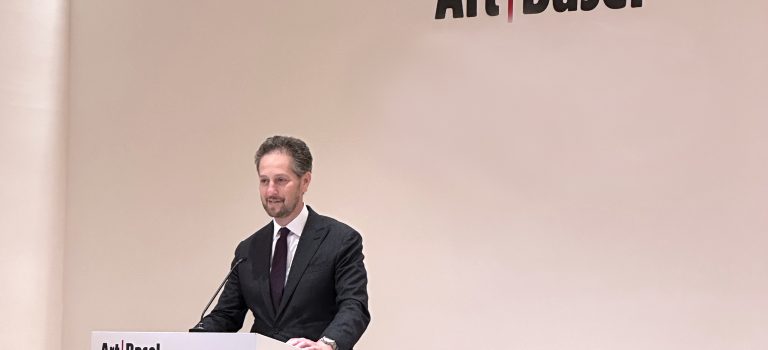Source: Artlyst.
In the ever-evolving landscape of high-net-worth (HNW) art collecting, 2023 is a pivotal chapter. The Art Basel and UBS Survey of Global Collecting, a collaborative effort between Arts Economics and UBS, sheds light on the dynamic behaviours of HNW collectors, capturing insights from 2,828 individuals across 11 key markets.
Despite the volatile backdrop of a high-interest rate environment, ongoing conflicts in Ukraine, and heightened tensions in the Middle East, the survey reveals a resilient art market. The first half of the year witnessed a double-digit decline in auction sales, yet international trade in art and antiques thrived, notably in Hong Kong, the UK, and the US. The vibrancy of Art Basel Hong Kong and the emergence of new Asian collectors in Swiss editions attested to the market’s enduring vitality.
HNW collectors displayed unwavering confidence, with Mainland Chinese collectors leading spending in the first half of 2023 after emerging from pandemic-induced lockdowns. In-person buying surged, with 86% of collectors making purchases through dealers and 84% opting for in-person acquisitions at galleries or premises. Interest in overseas galleries focused on France and Japan, mirroring a fascination with French and Japanese artists.
A noteworthy revelation from this study was the prevalent use of credit among collectors. 43% of participants utilized borrowing to finance their collections, showcasing a robust response to higher interest rates, with ultra-high-net-worth collectors funding half of their collections through credit channels.
Looking ahead, 77% of surveyed collectors expressed confidence in the art market’s performance, indicating a baseline resilience within the sector. Against shifting global dynamics, this survey delves into the motivations propelling collectors. It delves into purchasing intent, risk attitudes, financing strategies, and travel habits, offering a comprehensive view of the art collecting landscape.
In this ever-changing environment, the role of collectors remains paramount. Their commitment to artists and the industry is fundamental, shaping the trajectory of the art market. Art collection, far beyond a mere act of acquisition, becomes a testament to the human spirit and identity. Collectors’ pursuit of quality and meaningful artistic expressions fosters dialogues, transcending the familiar and embracing diverse concepts.
Amid these challenges, responsible collecting emerges as a beacon of change. Collectors become catalysts, influencing the industry’s long-term direction and nurturing the creative community. The survey, conducted with dedication and precision by Dr. Clare McAndrew, underscores the transformative power of collecting, inspiring conversations that celebrate courage, resilience, and the enduring spirit of discovery in the art world.

High-Net-Worth (HNW) Art Collecting Trends: A Snapshot
In the first half of 2023, the art market demonstrated a mixed landscape marked by notable shifts:
Auction Sector: Auction sales at major houses like Christie’s and Sotheby’s decreased by 16% in H1 2023 compared to 2022. Despite this, these sales exceeded H1 2019 levels, constituting 84% of 2022’s record-breaking figures.
Global Art Trade: In 2022, art and antiques imports reached $30.7 billion, hitting a historical high, while exports reached the second-highest level at $33.4 billion. Key hubs like Hong Kong, the UK, and the US experienced double-digit growth in inflows, despite global trade fluctuations.
Collector Spending: HNW collectors’ median expenditure on art and antiques rose to $65,000 in 2022, marking a 19% increase from 2021. Mainland Chinese collectors led spending in H1 2023, with a median expenditure of $241,000, reflecting a strong post-lockdown rebound.
Spending Preferences: Painting purchases constituted 58% of collectors’ spending in 2023, with digital art comprising only 3% of their total expenditure, down from 15% in 2022. Gen X collectors dominated high-value mediums, outspending millennials in areas like paintings.
Gender Disparity: Collectors spent less on works by female artists, with a ratio of 39% female to 61% male, but spending on female artists increased for collectors spending over $10 million per annum, indicating a shift at higher spending levels.
Market Caution: The average allocation to art in wealth portfolios fell to 19% in 2023, reflecting a more cautious approach among collectors, possibly driven by a focus on liquid financial assets or higher opportunity costs.
These trends underscore a nuanced market landscape, characterised by cautious spending, shifting preferences, and fluctuations in high-end art acquisitions.








